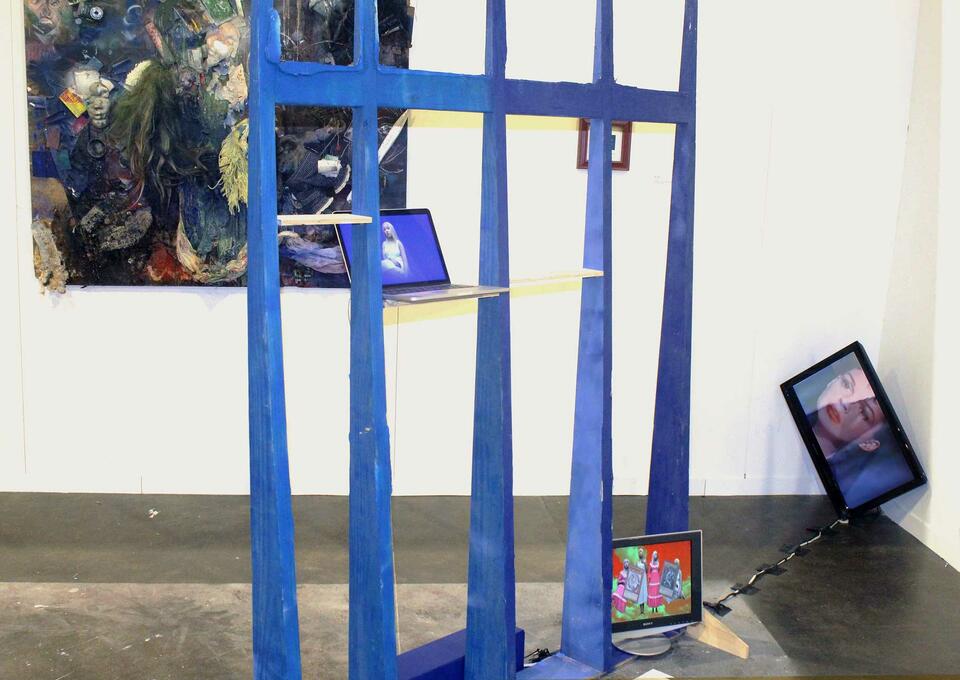¡wénrán zhào!
Text-iles
¡wénrán zhào! is an interdisciplinary artist who works with code, language, and textiles–meaning-making methods. Her works, as anachronistic interfaces for technology, augment tactile objects with bespoke software, creating sensorial experiences that reveal technology's semiotic and cultural relevance to contemporary societies. She seeks to give form and meanings to mediators—beings that attune relationships, even in the ephemeral and invisible—that have yet to be excavated, interpreted, conceptualized, or confronted. At the heart of her world lies relationality: complex networks constructed by "signs", "noise", and "heat".
My thesis consisted of three projects that delved into interactive textiles, incorporating responsive projection and sound into textiles. Viewers are encouraged to touch, caress, or stretch the textiles displayed.
In the digital projection, words emulate the structure and movements of threads, cloth, and knits–they would sway, fold, or tear–responding to the audience’s touch. “To weave is to speak,” the identical root of "textile" and "text" in various languages seems to remind us of the intertwined relationship between the two notions. This series of experiments seek to create experiences where the “touch” activates narratives, text and textiles merging into an integrity.
Image
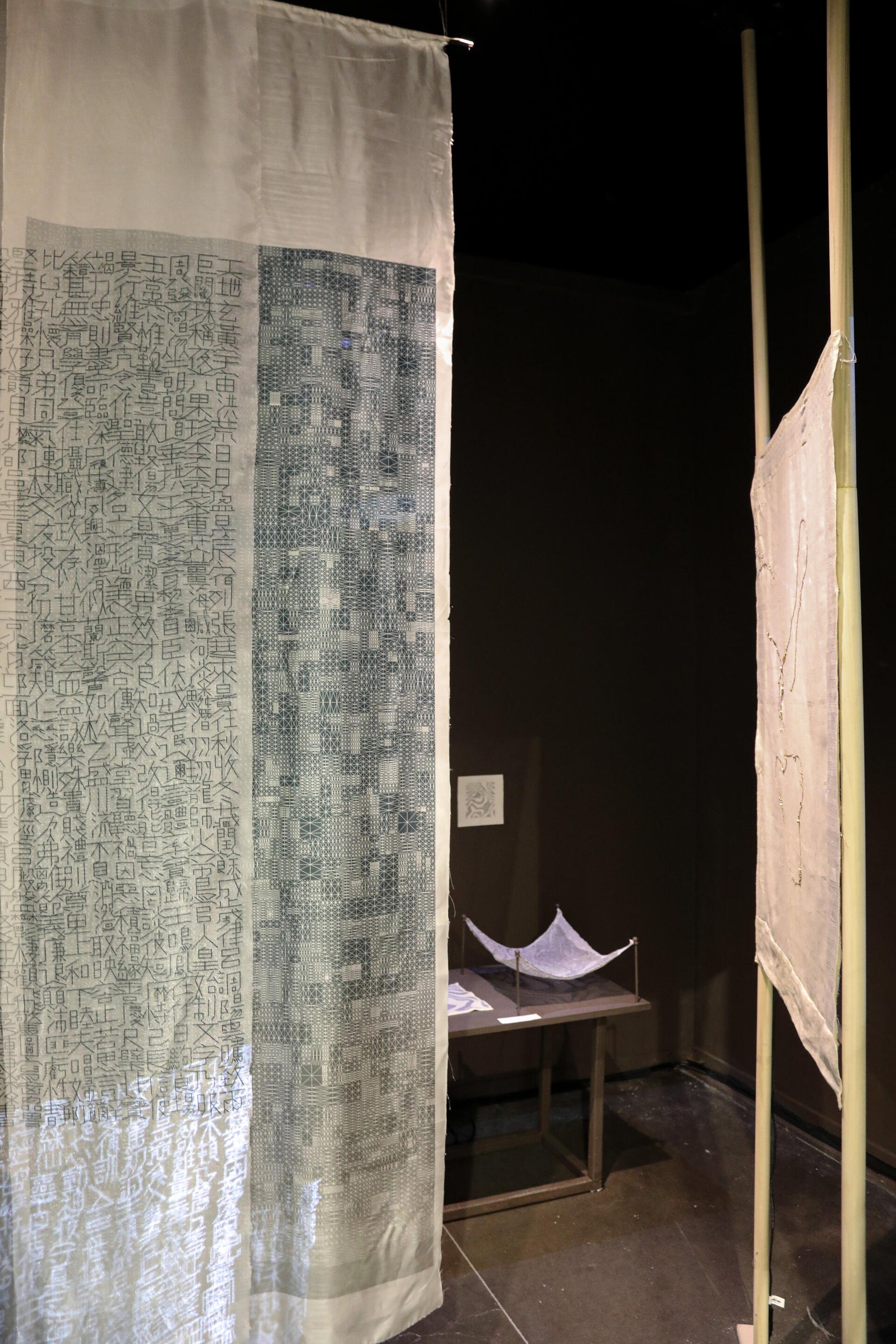
Thousand Character Text-iles | 千字紋 takes the form of dye sublimation prints on two layers of fabric, presenting the ancient Chinese classic "Thousand Character Essay," 千字文, in which the author skillfully created a prose poem using 1,000 non-repeating Chinese characters. To create the print, I used an open source javascript library Recursive Radical Packing Language (RRPL). Initiated by artist Huang Lingdong, the project proposes a method of storing and rendering arbitrary Chinese characters concisely while retaining their structural information. Otherwise, Chinese Characters are commonly stored in Unicode, which assigns a unique number to each character, or in typefaces, which are libraries that contain at least 7,000 glyphs, whereas the default set of glyphs for English is about 230.
This method of describing Chinese characters digitally is only made possible by some characteristics of the language: while there are over 100,000 different characters, each of them can be seen as a combination of components, which are called radicals. Radicals can be considered as building blocks that define the simplest shapes that make up every component. Combination can be applied recursively to describe more complex characters. Such a writing system follows the same logic of pattern-making, where a number of smaller parts compose a bigger pattern, and meanings are imbued on different scales.
In this work, the print on the sheer organza (left) is the original text of “Thousand Character Essay”, and on the right is the pattern generated with the RRPL system out of the characters. Every character has a corresponding pattern, and with the two layers overlap, the text can perfectly be embedded on the pattern.
Special thanks to Jeanette Cosentini for their support in the fabric printing production.
Image
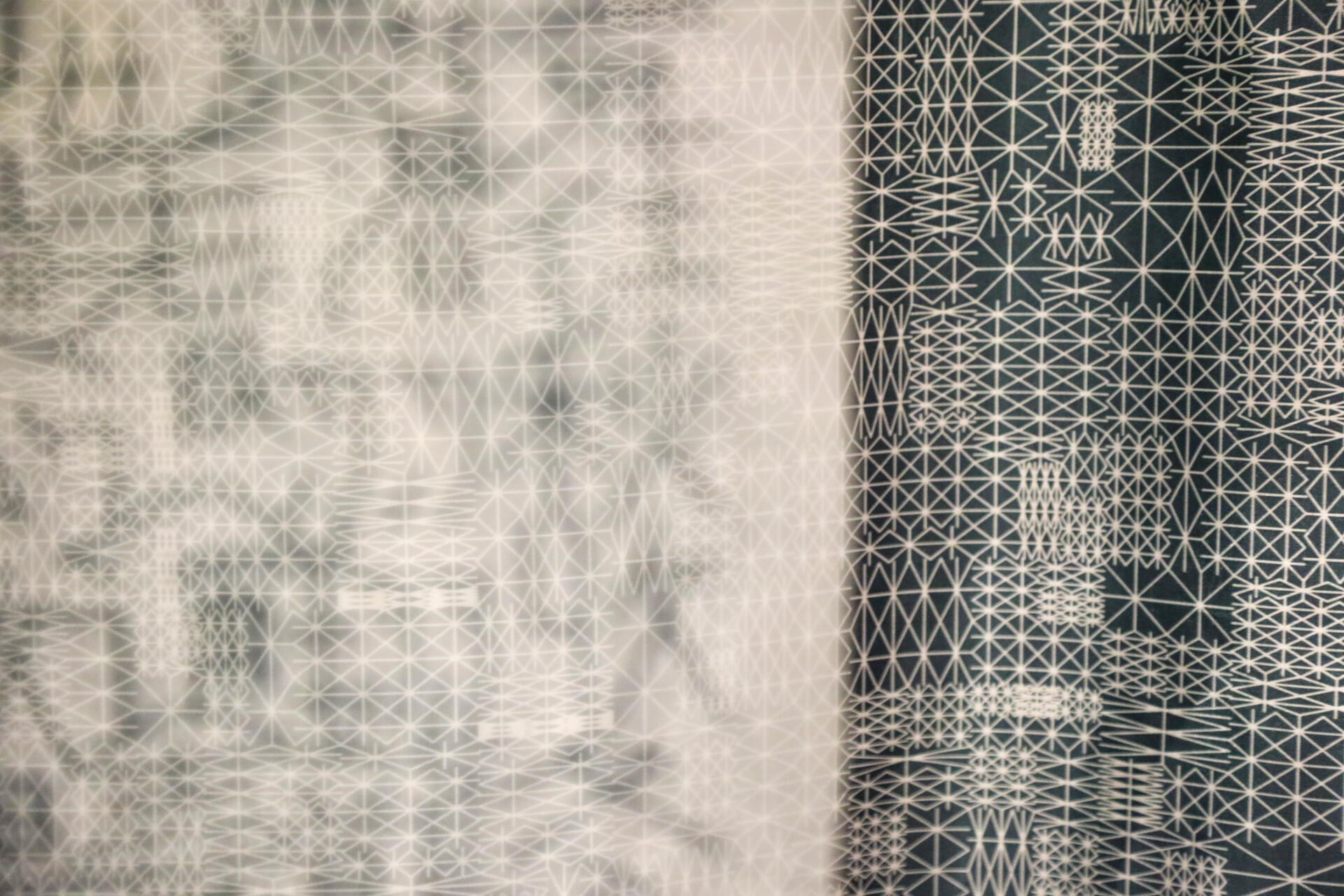
Thousand Character Text-iles 千字紋
Dye sublimation print on organza and silk
108’’ x 52’’
Thread in the Air an electronic textile piece incorporating responsive audio and projection on textiles. In the digital world projected on a physical tactile surface, words emulate the structure and movements of threads and cloth–they would sway, fold, or tear–responding to the audience’s touch. “To weave is to speak,” the identical etymology of "textile" and "text" in ancient languages seems to remind us of the intertwined relationship between the two notions. In the moment of being touched, narratives are experienced in a non-linear way, text and textiles merging into an integrity. Threads in the Air is an embodiment of how threads and fabrics shape words, thoughts, and narratives.
Image
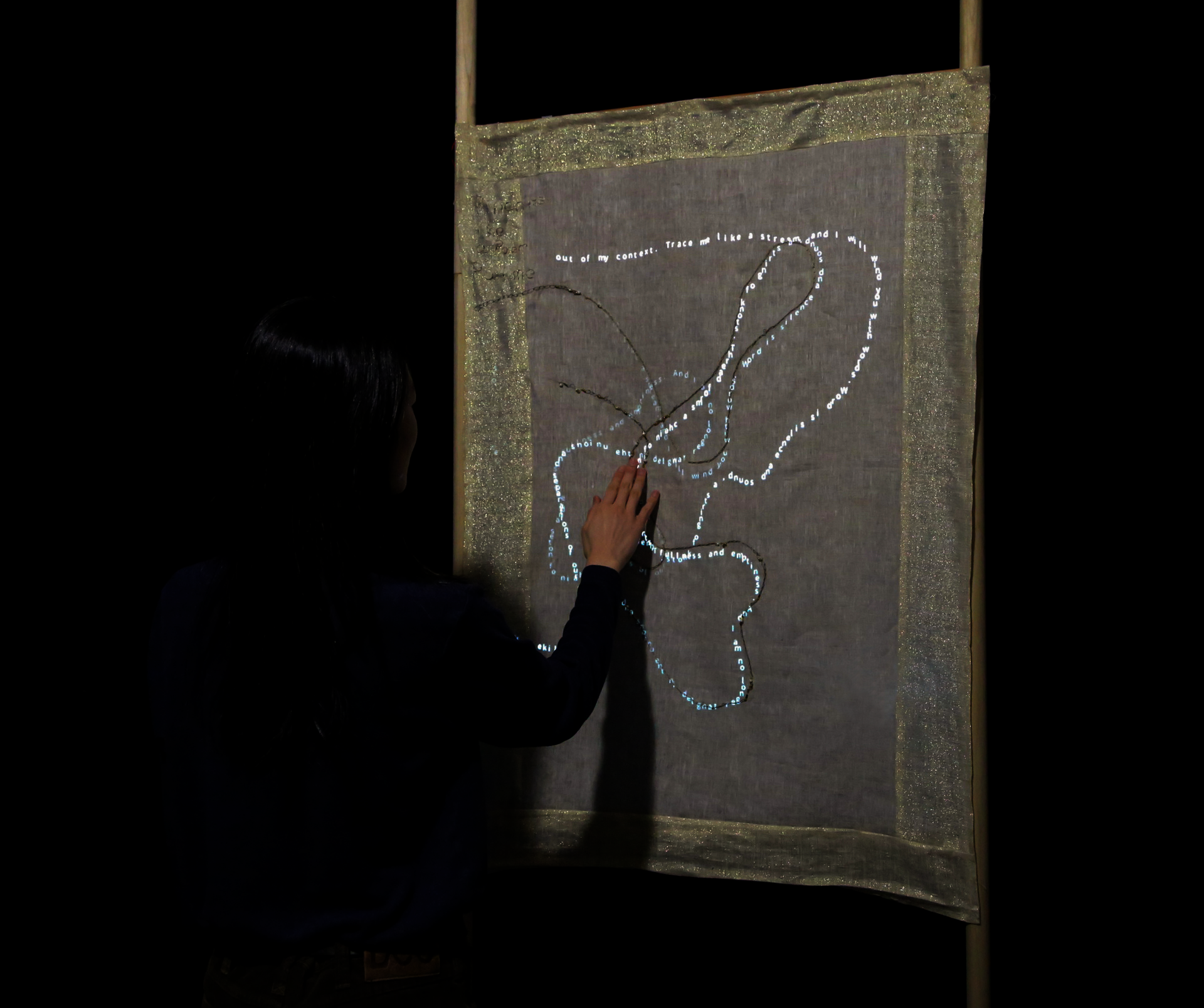
Thread in the Air
Embroidery with conductive threads and beads, bespoke software, microcontroller, projector, speaker, custom frame.
35’’ x 24’’
Image
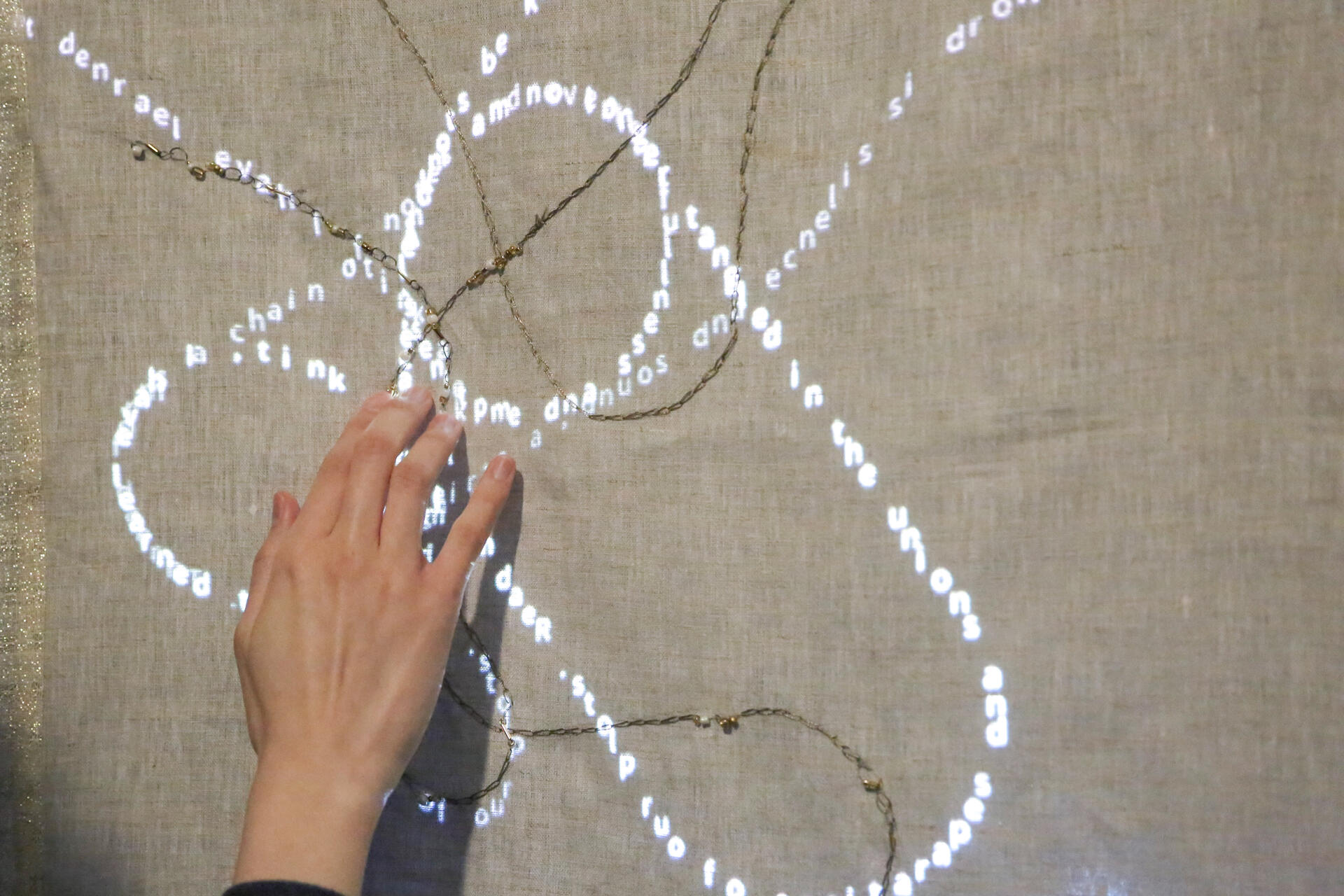
Image
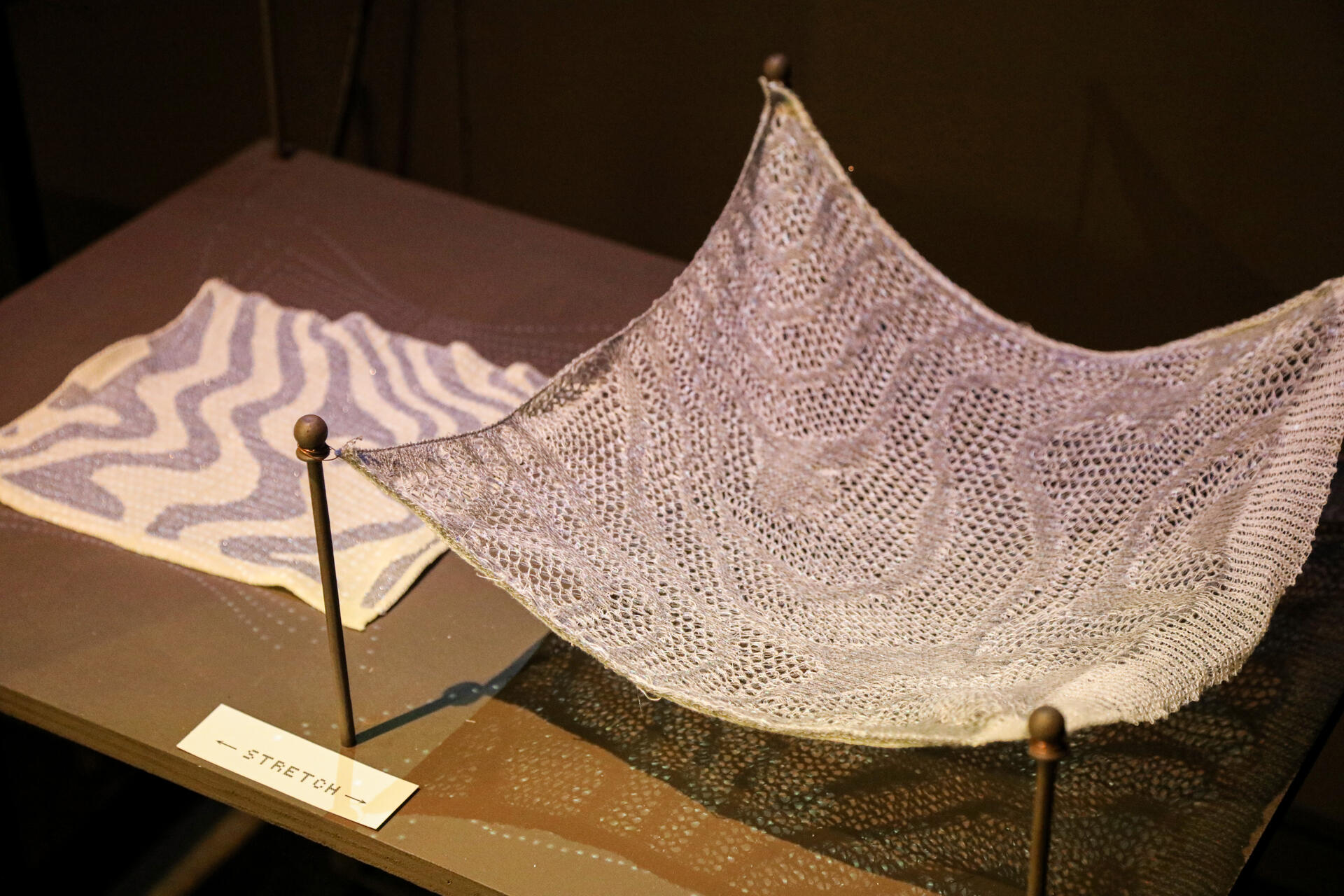
Patterned Language
Knitted fabrics with conductive, wool, cotton, and polyester yarns, bespoke software, microcontroller, projector, custom pedestal.
72’’ x 18’’ x 36’’
Patterned Language is a collaborative project between textile artists, poets, and writers. The process starts from a set of instructions–which generates patterns and drives the creation of poems–and the output then gets materialized with machine knitting techniques and a typewriter. When the knitted fabrics are touched, projection of the poems will be activated in the form of a digital knit.
Special thanks to Yutong Li, RISD MFA Textiles 25’, for her significant contributions to the machine knitting techniques used in this work.
Image
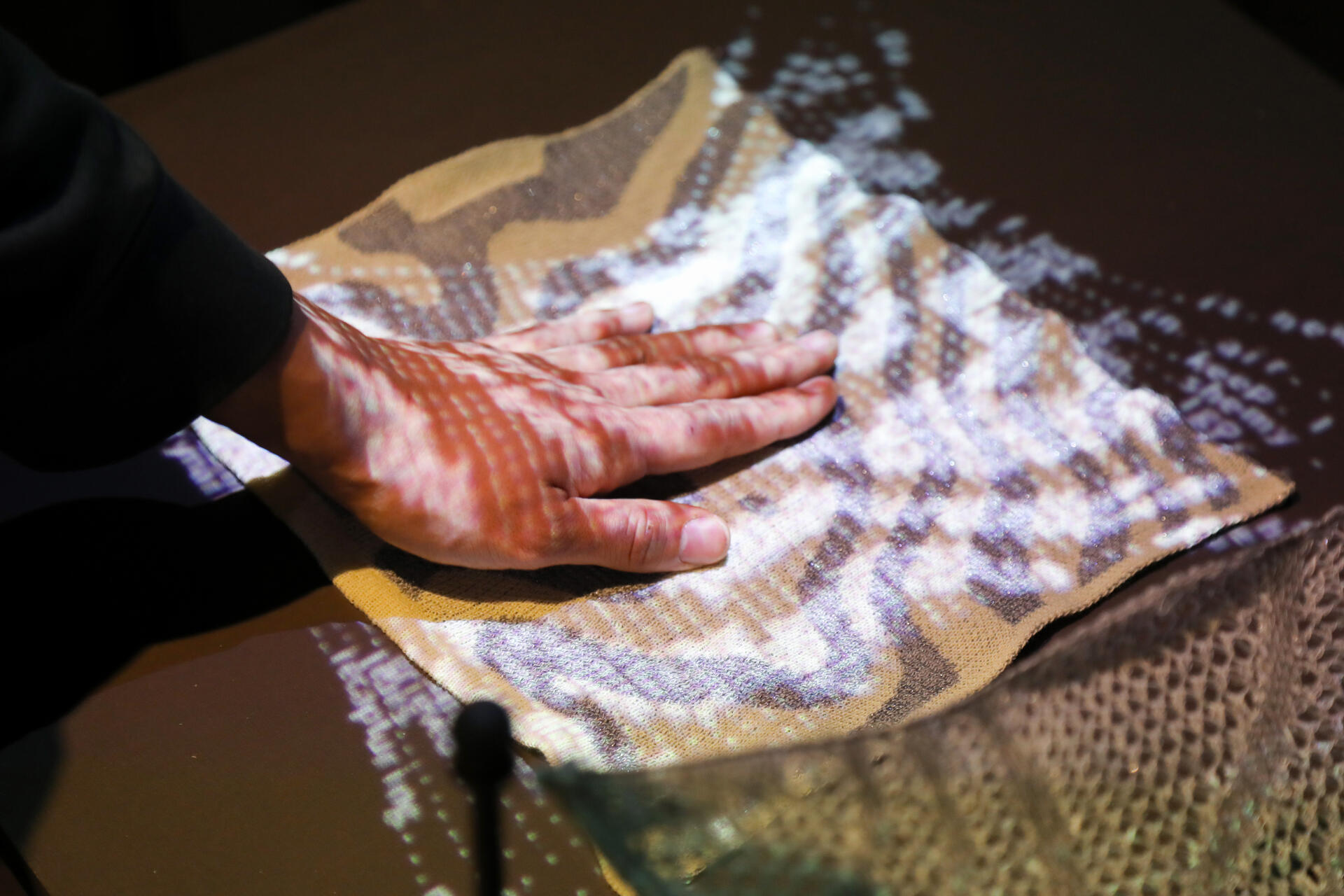
Poems activated while the physical knits are being touched.
Image
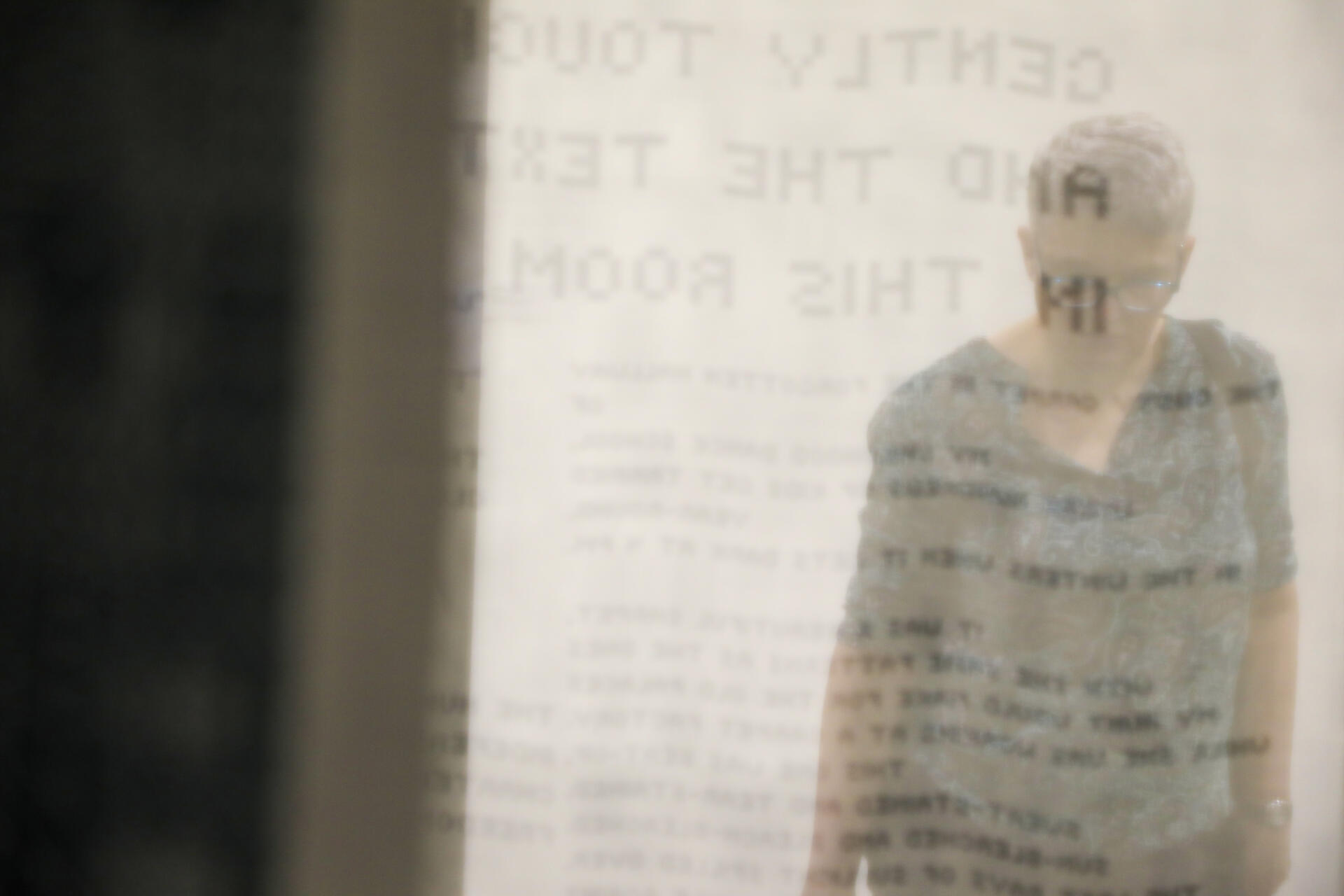
Entrance view
Image
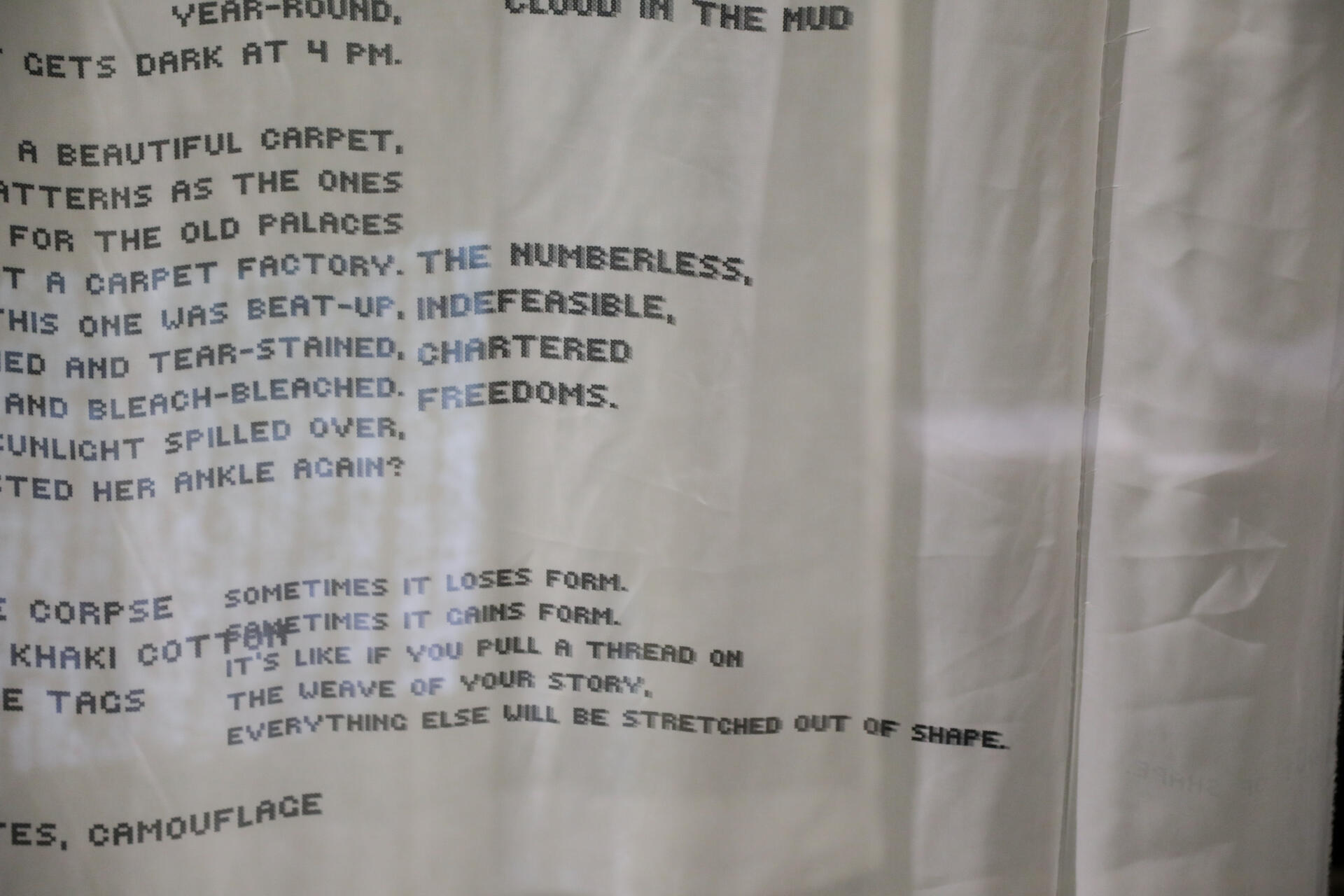
Entrance curtain
EXHIBITION IMAGES
